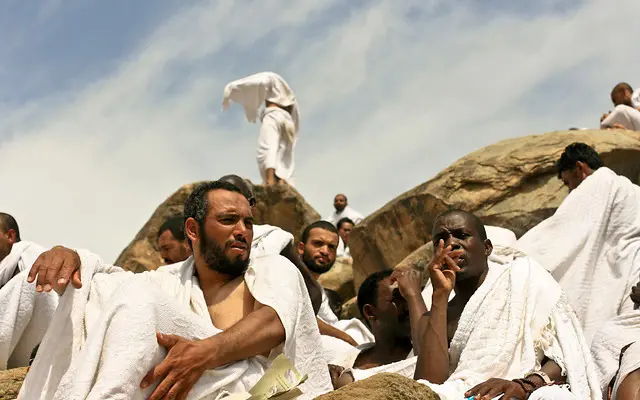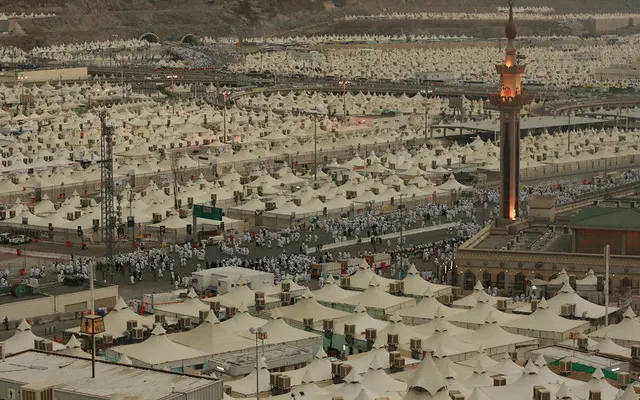What is Hajj & its significance?
Review the basic elements of one of the five pillars of Islam and understand the significance of this holy pilgrimage for the Muslim world.
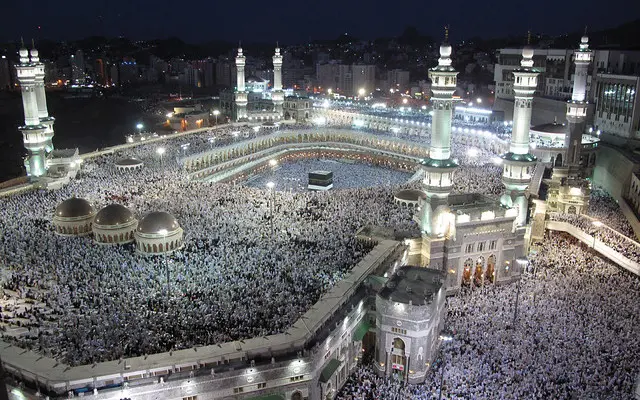
The meaning of Hajj
Other Names
- Hadjdj
- Hadj
- Haj
- Umrah
Hajj is the annual holy pilgrimage of Muslims to the city of Mecca in Saudi Arabia. It is considered as one of the five fundamental practices for Muslims known as the five pillars of Islam. Millions of faithful gather every year in the holiest city of Islam to carry out a series of specific series of rituals followed by the Prophet Mohammad nearly 1400 years ago.
Etymology of Hajj
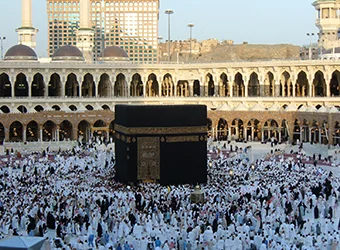
The Arabic word Hajj derives from the Hebrew hag which means “holiday”, while the Semitic root of the word means “to go around, to circle”. Similarly to some rituals followed at the Jewish festival of Sukkot, the Muslim who attends the Hajj has to circle the Kaaba, the holy building situated in the Great Mosque of Mecca, as well as to offer sacrifices.
Another meaning related to the word Hajj is to “attend a journey, or to set out for a place”. This journey refers to the trip made for centuries by the faithful who intend to reach the holy land of Prophet Mohammad to perform acts of worship and renew their sense of purpose in the world. As mentioned in the Koran “they will come to you on foot and on every lean camel, they will come from every distant pass”.
Timing and place of the pilgrimage
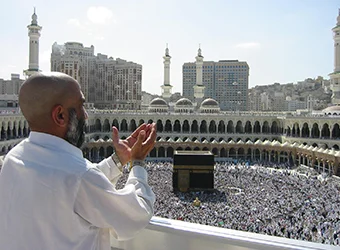
Hajj is a movable pilgrimage that occurs on the last month of the Islamic calendar called Dhu al Hijjah. Given that the Islamic calendar is lunar based, the corresponding dates of the festival on the Gregorian calendar change from year to year and the annual celebration takes place 10 to 11 days earlier than the preceding year. Hajj starts on the 8th day of the month Dhu al Hijjah and finishes on the 12th.
Thus, every year, according to official reports, more than 2 million pilgrims arrive in Mecca from over 180 countries worldwide. Mecca, the city of Saudi Arabia in the Middle East, is considered as the holiest place for the Islamic world since it is the birthplace of the prophet Mohammad and the location where the Prophet received the first revelation from God (Allah). The site of Mecca is also related to the sacrifices and the obedience of the biblical Prophet Abraham while the followed rituals are the symbolic reenactments of incidents of his life.
Hajj from its historical perspective
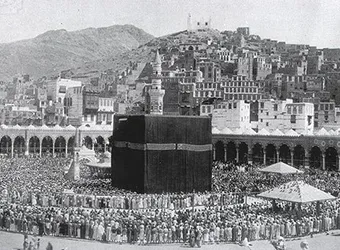
As stated in the Quran, the roots of the Hajj date back to the biblical era and the time of the Prophet Abraham. Based on the Islamic tradition Abraham was instructed by God to take his wife Hajar and his newborn son Ismail out into the desert and leave them there. The Prophet left them near the present-day location of the Kaaba. When the little boy cried out with thirst, his mother, in search of water ran desperately seven times between the two hills of Safa and Marwah. Finally, God rewarded her patience by revealing a spring (today called Zamzam Well) at the spot where she had left her son Ismail. Later, Abraham was commanded to build the Kaaba (the house of God) at this location and invite people to perform pilgrimage there. Abraham built the Kaaba with the help of his son while according to the Quran verses the black stone that is attached to Kaaba is a stone from Heaven brought by the Archangel Gabriel.
The present pattern of Hajj is established by the Prophet Mohammad. In 630 CE Mohammad led his followers to a trip from Medina to Mecca where he “cleansed” the Kaaba from the pagan idols that surrounded the holy building for centuries. Two years after, the Prophet performed his first and last pilgrimage accompanied by a big number of followers. Then, his followers were instructed about the rites of Hajj and from that time this annual pilgrimage became one of the five pillars of Islam.

The significance of Hajj
During Hajj, each pilgrim follows the route once walked by Prophet Mohammad, while the followed rituals are a representation of life incidents related to Prophet Abraham and Ismail. As in the biblical era, the journey requires physical strain while similarly to Abraham it is considered as a test of faith. Scholars of Islam point out that Muslims do not worship Kaaba but its metaphorical representation of the house of God at this highly sacred and historical site.
Muslims believe that Hajj can bring great spiritual rewards as well as it erases all the previous sins of the person who performs it. It is seen as spiritual merit that provides the opportunity of self-renewal. On the social level, a faithful who has attended a successful pilgrimage is held with respect in Muslim communities, while in some cultures, people who fulfilled Hajj are used to add the prefix Hajji to their names.
Prophet Muhammad said: Whoever performs Hajj with any obscenity shall return like a new born baby.
Apart from its religious and social significance, Hajj is also considered as a symbol of equality since it brings together and unites Muslims from different countries, color, and cultures. Last but not least, it should be pointed out that contrary to the typical Muslim praying habits in mosques where men and women pray separately, during Hajj in the Great Mosque of Mecca both genders are following the rituals in the same areas.
The Hajj pilgrims
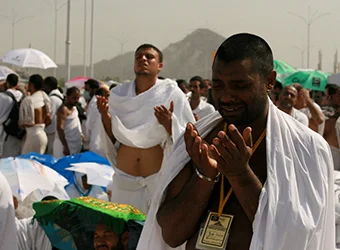
According to Islamic tradition, Hajj is a mandatory religious duty for Muslims. It should be carried out at least once in a lifetime by every adult who is physically and financially capable of undertaking the journey and can support his/her family during his/her absence. It is common for those who cannot afford the Hajj to be financed by community leaders of other Islamic charitable organizations. Many, save money for their entire lives in order to be able making the journey. While others chose to minimize the travel costs by undertaking a walking trip to Saudi Arabia, which in some cases lasts for months.
A person can also perform Hajj (Hajj Badal) on behalf of another relative or friend who cannot make the journey due to an illness or old age. Hajj Badal may also be performed for a deceased person. In this case, the pilgrim should acknowledge the person he/she stands for while the Hajj is performed only for the person who is represented and not for the one who is physically on the spot. Pilgrims can also visit Mecca and perform the obligatory rites during other periods of the year. In this case, the pilgrimage is called “Umrah” or “the lesser pilgrimage”. However, the Umrah is not substituting the Hajj and the faithful should return to perform Hajj at another point of his/her life.
Today, the majority of pilgrims arrive in Mecca from around the world through the airport of Jeddah which is the closest to the city. But there are also others who reach Saudi Arabia by sea or road. During the medieval times, pilgrims used to gather in big cities of Syria and Egypt targeting to reach Mecca in caravans under state patronage. This was done for protection from Bedouin robbers and natural hazards as well as to ensure the necessary provisions and knowledge needed to cross the “pilgrimage road” through the desert.
